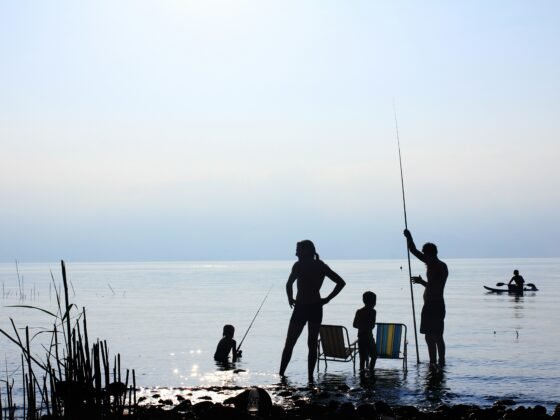
Seasoned campers know that there’s a universal truth in camping, which goes as follows: you’re only as good as your worst gear. The fact is that along with the weather, the stuff you pack can make or break a camping trip. Veteran campers also know that good gear is worth the extra cost. When you invest in the high-quality stuff, you can sometimes quite literally use it for a lifetime.
With that being said, lots of outdoor equipment has a shelf life. Knowing when to retire gear is an important part of being a responsible camper. Using old, worn-out gear is an all-around bad idea, and it could put you in a potentially disastrous situation. Shoddy, damaged stuff can leave you without the necessities of life, including reliable shelter and access to food, water and fire.
How to Test Your Camping Gear
You know you can’t use that old tent, sleeping bag and cooler forever, but how do you know when it’s time to hang it up? At least a week before you head out for a trip, it’s absolutely vital that you set up a complete campsite in your driveway or backyard. Perform a gear audit so you know what still works. You don’t necessarily have to sleep there, but take every item out of storage and give it a full test and inspection. Set up your tent, roll out your sleeping bags and replace old batteries. The last thing you want is to arrive at your site, away from civilization, without a working headlamp or poles for your tent.
Pro tip: Test your brand-new gear, too! You would be surprised to find how many experienced campers have discovered defects and malfunctions right out of the box, so never assume that new gear is working gear.
Signs Your Gear Needs to be Replaced
When you’re doing your backyard test run, there are some obvious signs that will help you determine whether or not some of your items need replacing. Pay attention to the following issues before packing any old piece of gear.
- If it Contains Holes, Rips or Tears — This one is crucial when you’re inspecting your tent, sleeping bag, rain gear and emergency blankets. Rips, holes and tears can leave you without protective shelter, which can put you at risk of developing hypothermia, getting sunburned and having an all-around dreadful time. Also, be sure to use a tarp shelter for an extra layer of protection and inspect all tarps before you go. Always invest in heavy-duty backpacks, tents and apparel made of durable materials such as high-denier nylon that’s unlikely to rip or tear. You can also purchase a tent repair kit to patch up any holes before you go.
- If it’s Missing Pieces — As much as we talk about leaving no trace, why does it feel like we’re always leaving pieces and parts behind or somehow misplacing them? It happens to the best of us, so don’t stress. Make sure to inspect your tent for all the parts, using the manual to double-check that everything’s there. You can often order tent-part replacements from the manufacturer, so a lost pole or cord doesn’t necessarily mean you have to fully replace your tent.
- If Your Electronics Won’t Turn On — These days, your camping stash is probably full of small, battery-powered or plug-in electronics — flashlights, lanterns, emergency radios, possibly even a coffee maker for those outings with electric hook-ups. Make sure to give all electronics a test before heading out and ensure that you have replacement batteries as a backup.
- If Your Coolers Don’t Stay Cold — If you’re still rocking that hand-me-down icebox that barely keeps ice cold for more than a day and smells like mold, it’s time to upgrade your cooler. Today’s coolers have come a long way since the days of your dad’s vintage Coleman (which, don’t get us wrong, were amazing for their time). Advanced. hard-sided coolers can keep your food and drinks cold for longer. Many even come with lifetime guarantees. So, you can buy it for life and, like your parents, maybe even pass it onto the next generation!
- If Your Emergency Supplies Are Outdated — You never want to get into a situation where you’re in need of emergency care but don’t have the proper supplies on hand. As part of your gear audit, thoroughly inspect the contents of your emergency supply kit and first-aid kit, replacing any items that may have been used or removed. Also take note of any expiration dates on medications, bandages, antiseptic wipes, etc. If you have emergency food in your stash, make sure it’s still good. Be sure to test any emergency matches and fire-starters as well.
- If You’re Rocking Incandescents — Proper light sources — including flashlights, lanterns and headlamps — are vital to a good camping trip. They help you get around safely when the sun goes down and help you find your way to the bathroom when you need a break from the campfire. We don’t believe in replacing gear simply to have the newest or coolest tech on the market, but this is one upgrade that could seriously benefit you. LEDs, of course, last a whole lot longer (up to 25,000 hours for LEDs compared to about 3,000 hours for incandescents), so they’re more likely to work when you need them to work.
- If Your Apparel is Worn Out — Don’t forget to inspect the gear you wear, too. Excessive use in demanding environments can take a toll on your camping clothing, boots and outerwear, so make sure to give them a thorough inspection and try them on before packing. Worn-out, tattered and ill-fitting camping apparel can leave you cold, wet and susceptible to sunburn, bugs and blisters, so don’t skip over this step.
Keep Your Gear Alive for Longer
Part of being a responsible outdoor adventurer is having a minimal impact on the environment. One of the best ways to do that is to buy reliable gear, take care of it and repair it before you go out and buy a brand-new replacement. Of course, excessive consumerism has dire environmental impacts, so the less you buy, the better for the planet (and your wallet). Invest in tested camping brands and make sure to store your gear in durable, watertight storage cases when not in use.












